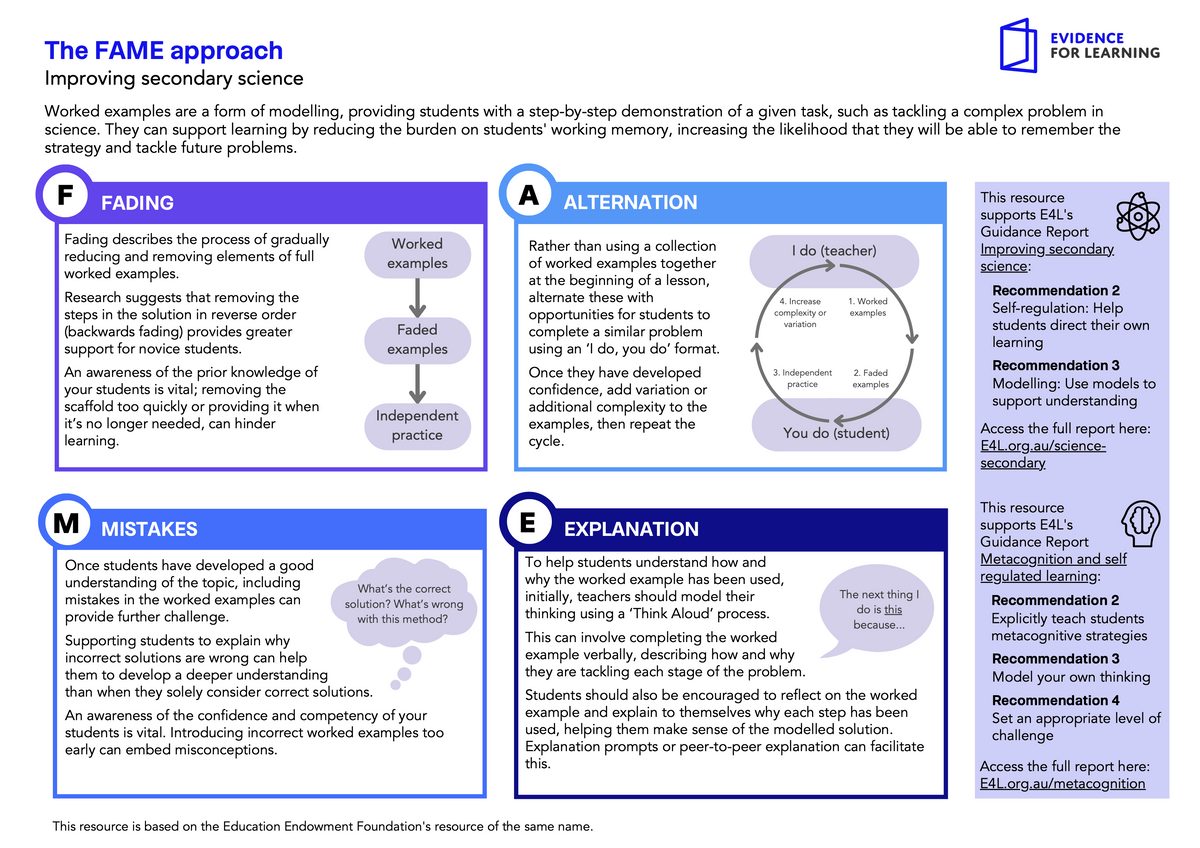Worked examples are a form of modelling, providing students with a step-by-step demonstration of a given task, such as tackling a complex problem in science. They can support learning by reducing the burden on students’ working memory, increasing the likelihood that they will be able to remember the strategy and tackle future problems.
There are a few simple strategies that can be used to help optimise the effectiveness of worked examples, which can be remembered using the handy acronym FAME.
- Fading describes the process of gradually reducing and removing elements of full worked examples.
- Alternating worked examples with opportunities for students to complete a similar problem.
- Mistakes can provide further challenge but need to be used with care to avoid reinforcing errors or misconceptions.
- Explanation by the teacher of their approach throughout a worked example via a ‘think aloud’ process.

Download the FAME tool below for more detail. The accompanying planning template can be used to plan an approach to worked examples using FAME.
Worked examples using FAME tool
The FAME approach outlines a few simple strategies that can be used to maximise the effectiveness of worked examples.Uploaded: • 98.6 KB - pdfFAME planning template
A planning template for using the FAME approach for worked examples.Uploaded: • 69.8 KB - pdfFor further detail on the FAME tool, see the Improving secondary science Guidance Report.
Guidance Reports
For related evidence and supporting resources, see the Guidance for Educators below.
